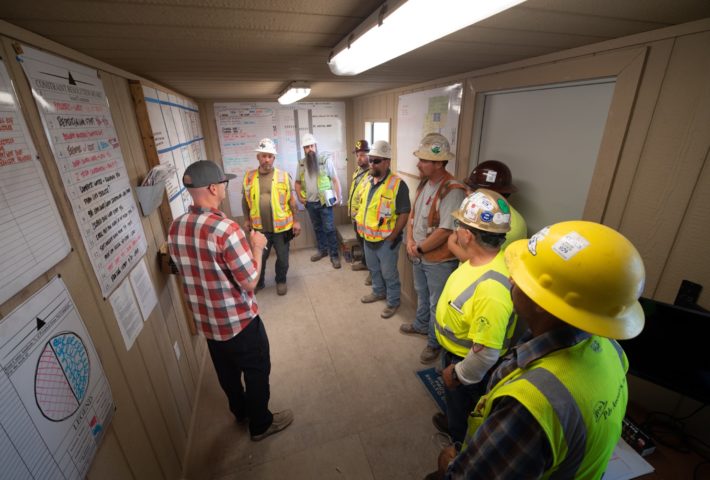Daily Huddle Questions – Why Huddle?
Back when I was still cutting my teeth in this business, it was my job to have the trailer conference room ready for the weekly subcontractor meeting. I’d hunt down the foreman in the field to make sure they remembered it was meeting day and to make sure they were going to attend. I’d be sure the coffee pot was hot and have all the schedules printed and laid out with the sign-in sheet ready to pass around. When the trades would hit the trailer, my general superintendent, superintendent, field engineer and I would all be sitting on one side of the table as the trades took their seat on the other side. I remember the mood in the room as being tense. Some posturing, a bit of arguing, some foul language and, after an hour or so, everyone dying to get back to the field.
One day, my project manager attended the meeting. Before we started, she told our field team to spread out a bit. “Spread out?” I asked, confused.
“Yes, you all look intimidating, sitting next to each other on one side of the table. Mix it up, spread out.”
I was the shortest in the group (at 6’3!), and it never occurred to me that our seating arrangement may have had something to do with the feeling of apprehension in the room. However, my PM wasn’t wrong, and I could tell immediately that it didn’t seem so much us (GC) vs. them (subcontractor).
There was something that felt more “team” about arranging our meetings this way and, as the years passed, I continuously sought out more ways to continue to nurture that atmosphere. Eventually, I evolved past those weekly, protracted subcontractor meetings to a daily huddle.
What is a Daily Huddle?
If you are wondering “why huddle?” here are a few reasons:
- Organizes the day’s schedule – with everyone catching up each day, we all know who is working on what, where, and for how long.
- Improves communication and provides an understanding of expectations – when you’re making a point to talk to each other every day, communication naturally improves.
- It saves time – it sounds counter-intuitive, but it winds up taking LESS time—and achieves MORE—if you meet more often, for shorter durations.
- It’s informational – the meetings are short, so everyone needs to get to the point and relay the most pertinent information.
- It’s solves problems quickly – that daily communication facilitates problem-solving like nothing you’ve seen.
- It builds culture – the spirit of teamwork and mutual respect that grows through this practice yields dividends in the environment of the project team.
By: Keyan Zandy, COO
Skiles Group
If you have any Daily Huddle Questions, please use the comments below.
For more from Keyan, see The Lean Builder – A Builder’s Guide to Applying Lean Tools in the Field or Connect with Keyan on LinkedIn.









